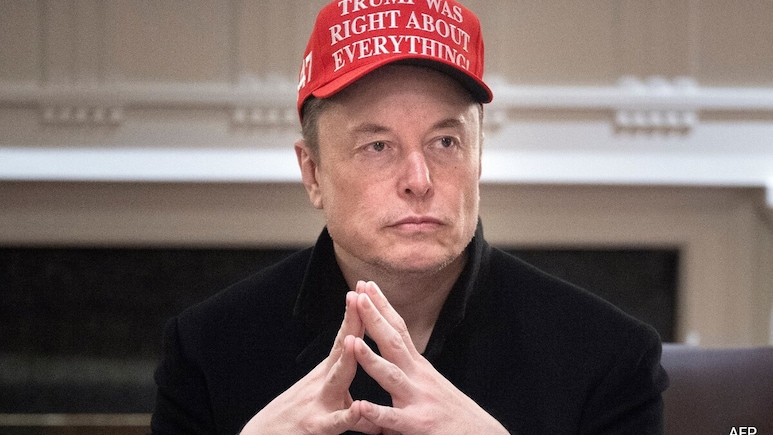The tech world was recently rocked by a seismic announcement: Elon Musk, the ever-unpredictable entrepreneur, sold his social media platform, X (formerly Twitter), to his AI company, xAI, for a staggering $33 billion. This move, as perplexing as it may seem to some, has sparked a firestorm of speculation and analysis. What drove Musk to sell? What are the implications for the future of X? And how does this fit into the larger narrative of AI’s growing dominance? Let’s dive in and unpack this complex, multi-faceted deal.
The Musk Gambit: Why Sell X?
Musk’s rationale for selling X is multifaceted. He’s publicly stated that integrating X’s vast data trove with xAI’s cutting-edge AI capabilities will unlock “immense potential.” Think about it: X offers a real-time pulse of global conversations, trends, and opinions – a goldmine for training AI models. This data could be instrumental in developing more sophisticated algorithms, improving natural language processing, and even personalizing user experiences in ways we can only begin to imagine. But is there more to the story? Some analysts suggest that Musk’s sale of X could also be a strategic move to streamline his sprawling business empire and consolidate resources. He’s juggling numerous ventures, from Tesla and SpaceX to Neuralink and The Boring Company. Could offloading X free up his time and capital for other, perhaps even more ambitious, projects? It’s a question worth pondering.
The Future of X: What Changes Can We Expect?
The integration of X and xAI raises intriguing questions about the platform’s future. Will xAI’s Grok chatbot, already integrated into X, become more central to the user experience? Might we see the emergence of AI-powered content moderation or personalized news feeds tailored to individual users’ interests? One can’t help but wonder if this merger signals a shift towards a more AI-driven social media landscape, a landscape where algorithms play an even larger role in shaping our online interactions. While Musk hasn’t announced any immediate radical changes, the possibilities are both exciting and, perhaps, a little unsettling.
The AI Power Play: Musk’s Broader Vision
Musk’s fascination with AI is no secret. He’s been a vocal advocate for responsible AI development, even co-founding OpenAI (though he later parted ways with the organization). His acquisition of X, and its subsequent sale to xAI, could be seen as a crucial step in his quest to shape the future of artificial intelligence. By combining X’s data with xAI’s expertise, he’s positioning himself to be a major player in this rapidly evolving field. Is this a power play? Perhaps. But it’s also a bet on the transformative potential of AI, a bet that this technology will fundamentally reshape how we communicate, interact, and even think.
The Financial Fallout: Winners and Losers
While the $33 billion price tag may seem astronomical, it’s actually lower than the $44 billion Musk originally paid for Twitter. Some analysts believe this reflects the platform’s tumultuous journey under Musk’s leadership, marked by controversial policy changes, mass layoffs, and a decline in advertising revenue. But is this a loss for Musk? Not necessarily. He maintains control of both xAI and X, albeit indirectly, and the potential synergies between the two companies could ultimately prove far more valuable than the initial purchase price.
The Ethical Equation: Navigating the Uncharted Waters of AI
The integration of X and xAI raises important ethical considerations. How will user data be used and protected? Will AI algorithms exacerbate existing biases or create new ones? What safeguards will be put in place to ensure responsible AI development and deployment? These are not easy questions, and the answers will have far-reaching consequences for the future of social media and, indeed, society as a whole.
5 Key Takeaways from the X Sale
- Data is King: The deal underscores the immense value of data in the age of AI.
- AI Integration is Accelerating: The merger signals a growing trend towards integrating AI into social media platforms.
- Musk’s AI Ambitions: The sale reinforces Musk’s commitment to shaping the future of artificial intelligence.
- Ethical Considerations: The deal raises crucial questions about the responsible use of AI and user data.
- The Future of Social Media: The merger could fundamentally reshape the social media landscape.
What Does This Mean for You?
The sale of X to xAI has far-reaching implications for everyone who uses social media. It raises fundamental questions about the future of online communication, the role of AI in our lives, and the ethical considerations surrounding this powerful technology. It’s a development that warrants careful consideration and ongoing discussion.
The Road Ahead: A Future Shaped by AI
The sale of X is just the latest chapter in the ongoing saga of AI’s rise to prominence. As this technology continues to evolve, it will undoubtedly transform our world in ways we can scarcely imagine. The challenge, and the opportunity, lies in harnessing its power responsibly and ethically, ensuring that it serves humanity, not the other way around. What do you think? Are we on the cusp of a new era, an era where AI becomes an integral part of our daily lives? Only time will tell.
Getting Started with Grok: A Step-by-Step Tutorial
Now that we’ve explored the implications of Musk’s acquisition, let’s dive into a practical application of xAI’s technology: Grok. This AI-powered chatbot is designed to answer questions with wit and humor, and it’s already integrated into X (formerly Twitter). Here’s how to start using Grok:
Step 1: Accessing Grok
If you’re an X Premium+ subscriber, you already have access to Grok. Simply look for the Grok icon in the X interface. It’s typically located alongside other features like DMs and notifications.
Step 2: Asking Questions
Once you’ve found Grok, type your question into the input field. Be as specific as possible to get the most accurate and relevant answers. Grok is designed to understand complex queries and can even provide context-aware responses based on your previous interactions.
Step 3: Refining Your Queries
If Grok’s initial response isn’t quite what you’re looking for, you can refine your query by adding more details or rephrasing your question. Grok learns from each interaction, so the more you use it, the better it becomes at understanding your needs.
Step 4: Exploring Grok’s Features
Grok offers more than just simple question answering. It can also provide summaries of articles, generate creative content, and even offer personalized recommendations. Experiment with different types of queries to discover the full range of Grok’s capabilities.
Grok’s Potential: Beyond Q&A
Grok’s integration into X is just the beginning. Its underlying technology has the potential to revolutionize how we interact with information online. Imagine a future where you can access personalized insights, real-time analysis, and even AI-generated content directly within your social media feed. Grok represents a significant step toward that future.
Example Grok Interactions
To give you a better understanding of how Grok works, here are a few examples of interactions:
User: What's the latest news on the James Webb telescope? Grok: The JWST recently captured stunning images of a galaxy cluster revealing previously unseen details about star formation. Want to see the pictures? *[link to image]* User: Write a haiku about the future of AI. Grok: Code blooms, thinking fast, Worlds change, futures rewritten, Humans, hand in hand. User: Summarize the impact of the X sale to xAI. Grok: The sale of X to xAI marks a significant shift in the social media landscape, highlighting the increasing integration of AI and the potential for personalized user experiences. It raises ethical considerations regarding data privacy and the future of online communication.
The Future is Grokking: Embracing the AI Revolution
Grok, and other AI tools like it, are rapidly changing how we access and process information. By understanding these tools and their potential, we can better navigate the evolving digital landscape and harness the power of AI to enhance our lives.
Key Questions about the X Acquisition
Why did Elon Musk sell X to xAI?
Elon Musk sold X to xAI to leverage X’s vast data trove for training xAI’s AI models, potentially leading to more sophisticated algorithms and personalized user experiences. It’s also speculated that the sale streamlines Musk’s business empire and frees up resources for other ventures.
What changes can we expect to see on X?
While no immediate radical changes have been announced, the integration of X and xAI could lead to a more AI-driven platform, with features like enhanced AI-powered content moderation, personalized news feeds, and a more central role for xAI’s Grok chatbot.
What are the ethical implications of this merger?
The integration of X and xAI raises significant ethical concerns, including the responsible use of user data, potential algorithmic biases, and the need for safeguards to ensure responsible AI development and deployment.
How does this sale impact the future of social media?
The sale of X to xAI signals a growing trend of AI integration in social media and could fundamentally reshape the social media landscape, potentially influencing how we communicate, interact, and consume information online.
What does the sale mean for users?
The sale of X to xAI has far-reaching implications for social media users, raising questions about the future of online communication, the role of AI in our lives, and the ethical considerations surrounding this powerful technology. It’s a development that warrants careful consideration and ongoing discussion.
The Dawn of AI-Driven Social Media?
The sale of X to xAI marks a pivotal moment in the evolution of social media. It signifies not just a change in ownership, but potentially a paradigm shift towards a future where AI plays an increasingly central role in shaping our online experiences. While the long-term consequences remain to be seen, one thing is certain: the integration of X’s vast data with xAI’s cutting-edge AI capabilities has the potential to reshape the social media landscape in profound ways, raising both exciting possibilities and critical ethical considerations.

